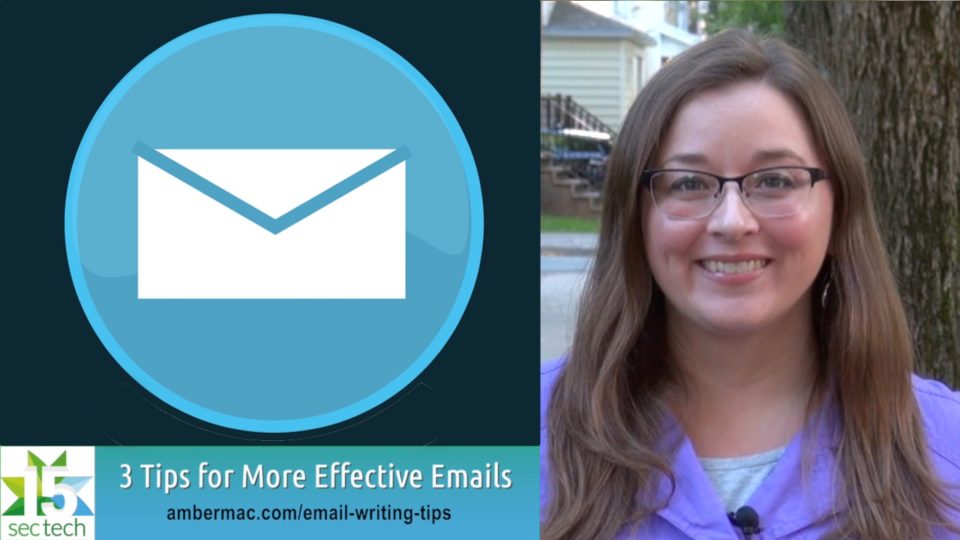
3 Tips for More Effective Emails
by Lara Killian on October 17, 2016
Email is a necessary evil in today’s work world, and there is still a lot frustrating about the experience. For instance, do you ever get a reply to an email you sent where you were asking for specific information or a certain response, and then you wonder why the person on the other end didn’t give you the info you needed? Chances are, you weren’t as clear as you could have been about what you needed them to include in their response to your message.
In a world of inbox overload, here are 3 tips for sending clearer emails to help get the response you need.
- Your Goal: Before you start writing, take your hands off the keyboard and consider: what is my primary goal for this message? Be courteous, but get straight to the point when you go to type out the specifics. Don’t make them wade through a long email if all you need is a simple reply (see next point).
- Be Concise: Limit the number of things you’re trying to get in the response to your message – if you ask 3 questions, chances are only 1 or 2 will get answered, so be strategic and leave out additional questions if you can instead ask them in a follow up email. It may seem like more work to break it into multiple emails but it can actually be easier to deal with small groups of questions that get answered instead of outlining a long list of questions that will delay and complicate the recipient’s response.
- Subject Lines: Of course you’re going to re-read your message before you hit send, but take the time to also review your subject line and make it as meaningful as it can be at a glance. Do you need a response today? Say so in your subject line. Can you mention a name or a project title so the receiver knows what the message is about before they open it up to keep reading? Be as clear as possible (but don’t forget that they’re probably not going to see the full subject line if it goes too long).
As a follow up point, and something that can change dramatically from situation to situation, knowing when to CC other team members or clients on an email is also important. Before you hit Reply-All, consider if everyone on the thread needs to read or respond to your message. If you require multiple responses from more than one person on the thread, or you need everyone to respond to the same question, then consider asking them to each respond to you individually. You may also want to consider putting the person’s name (maybe in ALL CAPS so they notice more easily) at the beginning of a new line if you’re changing who you’re asking for a response.
What are your email pet peeves? Let us know your thoughts on our social media channels!



